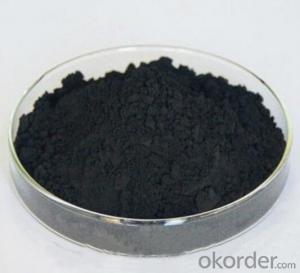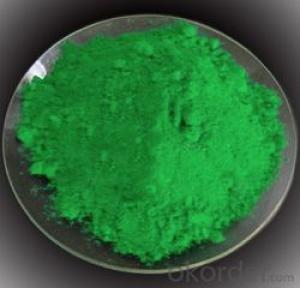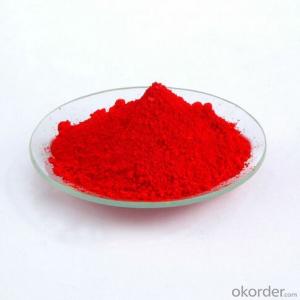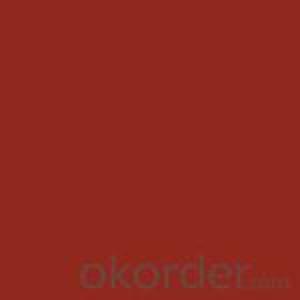Cobalt Violet Pigment Organic Pigment Powder
- Loading Port:
- Tianjin
- Payment Terms:
- TT OR LC
- Min Order Qty:
- 500 kg
- Supply Capability:
- 6000000 kg/month
OKorder Service Pledge
Quality Product, Order Online Tracking, Timely Delivery
OKorder Financial Service
Credit Rating, Credit Services, Credit Purchasing
You Might Also Like
Cobalt Violet Specifications
- Chameleon Blue High Quality Pigment Ceramic Colors Violet Producer
- Sample free
- MOQ:500KG
- Suitable for all glaze
Cobalt Violet Data Sheet:
| Pigment Name : | Cobalt violet |
| C.I. Name code : | P.V.14 |
| Chemical Composition: | Co/P/O |
| Appearance : | powder |
| CAS Code : | 10101-56-1 |
| C.I. Code : | 77360 |
| Heat Resistance : | ≤450℃ |
| water soluble | ≤0.5 |
| Oil Absorption : | 24.1 |
| PH: | 7.1 |
| Density: | 4.2~4.5g/cm3 |
| Moisture: | ≤0.2% |
| Remainder of 45square-meshsieve,%(m/m) | ≤0.1μm |
| 105%volatiles | ≤0.5 |



- Q: Can you take any powder, grind it finely, and mix linseed oil into it to make oil paints to make paint? Or do paint pigments have to have special characteristics? Thanks!!
- Pigments are specific minerals found in rocks. Then they are ground down and mixed with the binders for oil, acrylic, and watercolor paints. You can take art classes that teach you how to make your own paints. I have a cousin who hikes to find her own pigments and makes all the colors she paint with. If you'd like something less labor-intensive, you can buy the pigments you want from lots of art stores these days. They can be added to pre-existing colors to enhance them, or you can start from scratch to formulate your own colors. The bottles i've seen are around 8 ounces, and cost about $50. You will likely find books in the library and articles online that will help you learn to make your own pigments.
- Q: what is the pigment in hibiscus?
- Hibiscus flowers bear pigments of three types: carotenoids, anthocyanins, and flavonols. The exact pigments (all three of those types are actually sizeable families of similar chemicals) and the exact proportions depend on the color of the particular flower: there are literally several hundred species in the genus Hibiscus, and they come in all shades of red, pink, yellow, and orange. Carotenoids are oil-soluble, fairly stable pigments that come in all shades of red, orange, and yellow. Anthocyanins are water-soluble and significantly less stable: they're responsible for the blues, pinks, purples, and reds, and in high concentrations can produce colors so dark as to look black. Flavonols are the least vivid of the pigments: they produce pale pastel yellows, cream colors, and off-whites. (Plain white flowers usually have no visible pigment at all.) Flavonols actually do most of their color absorption in the UV spectrum: they're the plant equivalent of the melanin in human skin, keeping them from getting sunburnt.
- Q: If you could explain it to me I would be very happy!
- Accessory pigments are light-absorbing compounds, found in photosynthetic organisms, that work in conjuction with chlorophyll a. They include other forms of this pigment, such as chlorophyll b in green algal and higher plant antennae, while other algae may contain chlorophyll c or d. In addition, there are many non-chlorophyll accessory pigments, such as carotenoids or phycobiliproteins which also absorb light and transfer that light energy to photosystem chlorophylls. Some of these accessory pigments, particularly the carotenoids, also serve to absorb and dissipate excess light energy, or work as antioxidants.
- Q: I want to find bright colored eye pigments much like macs. However I dont want to spend tons of money. Does anyone know of a place that sells inexpensive eyeshadow pigments?
- There okorder /
- Q: Compare and contrast pigment color with the color seen from a light. What is the difference between mixing pigment colors and mixing light colors?
- you notice pigments the colour you notice them, using fact they replicate a spectra of sunshine, with particular frequencies, and take up all others seen to the human eye. in case you combine distinctive monochromatic mild with distinctive colours (as seen on the television: purple, green and blue it quite is referred to as additive mixing, or magenta, yellow and cyanide that's the different technique) your retina will upload the colors up, and experience it as a distinctive shade. (by skill of including each and all of the three colours on an identical intensity, you are able to create white mild) while mixing pigments (they are chemical compounds) you get a clean cloth, which will replicate an different spectra of sunshine, which you will see as a shade
- Q: I need to know the classes and sub classes of pigments classification
- INORGANIC PIGMENTS Oxides Chromates Sulphides Sulphoselenides Sulphates Silicates Ferrocyandies Carbonates Metallic Mixed Metal Oxides Vanadates ORGANIC PIGMENTS Organic pigments are generally categorized into six types : ?Monoazo Pigments ?Diazo Pigments ?Acid and base dye Pigments ?Phthalocyanine Pigments ?Quinacridone Pigments ?Other polycyclic Pigments if you want more detail: ORGANIC PIGMENTS: 1.AZO Pigments : Monoazo Yellow and Orange Pigments. Disazo Pigments. β-Naphthol Pigments. Naphthol AS Pigments (Naphthol Reds). Azo Pigment Lakes (Salt Type Pigments). Benzimidazolone Pigments. Disazo Condensation Pigments. Metal Complex Pigments. 2.POLYCYCLIC Pigments: Phthalocyanine Pigments. Quinacridone Pigments. Perylene and Perinone Pigments. Diketopyrrolo–Pyrrole (DPP) Pigments. Thioindigo Pigments. Isoindolinone and Isoindoline Pigments. 3. Anthraquinone Pigments. Anthrapyrimidine Pigments. Flavanthrone Pigments. Pyranthrone Pigments. Anthanthrone Pigments. 4. Dioxazine Pigments. Triarylcarbonium Pigments. Quinophthalone Pigments
- Q: I am planning on purchasing MAC, but what r the differences... thanks to all...I want to have an idea before I head to the mall.
- Pigments are really loose eye powders. For MAC, it's kind of like 'balls of sparkles' If you want really sparkly eyes, you'd probably want this. Dip your eye makeup brush in water, then in the pigment. I find this to work well, and it really compliments the product. It's best applied over a dark eyeshadow or primer. An eyeshadow is a packed together powder. (As you probably know) MAC eyeshadow comes on bright and radiant. So if you just want a simple look, this product works well. I suggest MAC - PaintPot. It's a creamy eyeshadow that is easy to blend. It's not waterproof, but it's difficult to rub off. It can act as a primer too.
- Q: what is the function of pigment molecules in photosynthesis?
- WELL to be exact cuvette 2: to observe the role of photosynthesis with chromatin cuvette 3: to observe the role of photosynthesis with UV rays cuvette 4: to observe the stability of the chloroplasts cuvette 5: to observe the reaction of the H2O synthesis
Send your message to us
Cobalt Violet Pigment Organic Pigment Powder
- Loading Port:
- Tianjin
- Payment Terms:
- TT OR LC
- Min Order Qty:
- 500 kg
- Supply Capability:
- 6000000 kg/month
OKorder Service Pledge
Quality Product, Order Online Tracking, Timely Delivery
OKorder Financial Service
Credit Rating, Credit Services, Credit Purchasing
Similar products
Hot products
Hot Searches
Related keywords

























